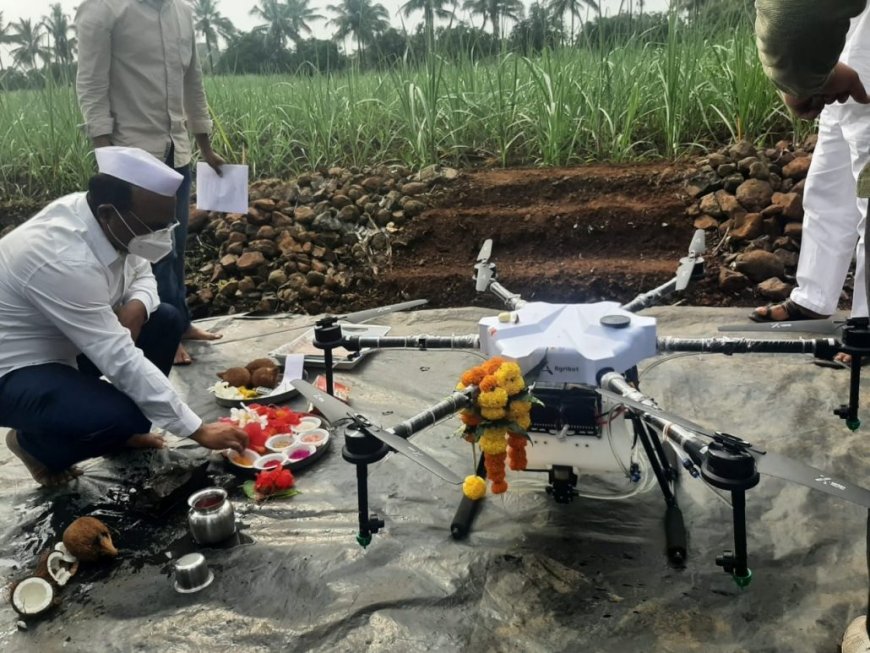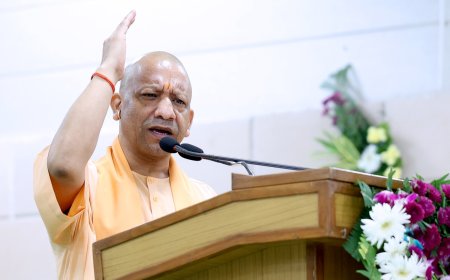India’s Agri – economy gets the drone edge
50% of the population, is now witnessing a revolutionary shift in its farming practices through the integration of drone technology

New Delhi: India, a nation where agriculture plays a pivotal role in its economy, supporting over 50% of the population, is now witnessing a revolutionary shift in its farming practices through the integration of drone technology. This change is poised to enhance crop yield, reduce environmental impact, and revolutionize how farmers in India manage their agricultural activities.
The Need for Innovation in Indian Agriculture
Agriculture in India is marred by numerous challenges. Small landholdings, erratic weather patterns due to climate change, water scarcity, and a shortage of labor due to urban migration are significant barriers. Traditional farming methods are no longer viable in ensuring the high productivity and sustainability required in modern times. Moreover, the labor-intensive nature of traditional practices and the growing scarcity of labor have propelled the need for technological intervention.
Introduction of Drones in Agriculture
The introduction of drones, or unmanned aerial vehicles (UAVs), into the agriculture sector marks a significant leap forward. Drones started as a tool for surveillance and data collection but have quickly evolved into multi-functional devices capable of performing a wide range of agricultural tasks.
The Multifaceted Benefits of Drones
1. Precision Agriculture
One of the most significant advantages of using drones is precision agriculture. Drones equipped with advanced sensors and imaging capabilities can collect data over large swathes of farmland, which can be used to make informed decisions on crop health, soil conditions, and moisture levels. This data-driven approach allows for precise application of water, fertilizers, and pesticides, reducing wastage and enhancing the efficiency of resource use.
2. Increased Crop Yields
Drones enable farmers to detect problems early by monitoring crop health through high-resolution imagery, including infrared. Early detection of pests, diseases, and deficiencies allows for timely intervention, thereby reducing potential crop losses. Furthermore, by ensuring that crops receive the exact nutrients and protection they need, drones help in maximizing yield.
3. Water Conservation
In a country plagued by water scarcity, managing this precious resource is critical. Drones facilitate efficient water management through accurate irrigation techniques. By identifying areas that require water and those that do not, drones help in significantly reducing water wastage, contributing to sustainable water management practices.
4. Reducing Environmental Impact
The targeted application of pesticides and fertilizers through drones not only reduces the cost of inputs but also minimizes the environmental damage caused by over-application and runoff. This targeted approach helps in maintaining the ecological balance and supports biodiversity.
5. Cost-Effectiveness and Accessibility
Initially, the cost of drone technology posed a barrier to many small-scale farmers. However, with localized manufacturing and government subsidies, the accessibility of drones has improved. Drone-as-a-Service (DaaS) models have also emerged, where farmers can avail of drone services on a subscription or pay-per-use basis without the need for upfront investment in owning a drone.
The Digital Sky Platform, a policy framework to ensure safe and secure drone operations, and the recent liberalization of drone laws are significant steps in this direction.

Case Studies and Success Stories
Several states in India have adopted drone technology with promising results. In Maharashtra, drones are used for soil and crop health assessment across thousands of hectares. Tamil Nadu has implemented drone technology for mapping and precision farming, resulting in increased yields and reduced labor costs. The introduction of drone technology in India is revolutionizing various sectors, bringing about substantial changes in how services and operations are executed across the country. Drones, or unmanned aerial vehicles (UAVs), are playing pivotal roles in agriculture, healthcare, disaster management, and infrastructure development, underscoring their growing importance in India's technological advancement and policy adaptation.
Healthcare
The healthcare sector in India has also seen innovative applications of drone technology, especially in remote and rural areas. Drones are used to deliver critical medical supplies such as blood, vaccines, and life-saving drugs to hard-to-reach regions, drastically reducing delivery times and improving the healthcare system's responsiveness. During the COVID-19 pandemic, drones were used to transport test samples and personal protective equipment (PPE), showcasing their potential in managing public health emergencies.
Disaster Management
Drones provide significant advantages in disaster management and response. They are deployed for real-time surveillance to assess disaster-hit areas, helping in the quick evaluation of damage and identification of accessible routes for relief operations. Drones also play a crucial role in search and rescue operations, where they can access areas that are otherwise unreachable by human teams or ground vehicles. Their ability to quickly map affected areas and relay information back to command centers improves the efficiency of disaster response strategies.
Infrastructure and Urban Development
In the field of infrastructure, drones contribute to the planning and construction of projects such as highways, railways, and urban developments. They assist in surveying large tracts of land and provide accurate data for construction planning and monitoring, ensuring projects adhere to scheduled timelines and budgets. Drones are also used in the maintenance of existing infrastructure, such as power lines, pipelines, and bridges, where they help detect faults and damage without the need for hazardous manual inspections.
Challenges and Future Prospects
Despite their numerous benefits, the widespread adoption of drones in India faces challenges, including regulatory hurdles, privacy concerns, and the need for technological standardization. As India continues to refine drone technology integration, the future holds potential for greater automation and AI incorporation, making drones not only tools for carrying out specific tasks but also for gathering and analyzing data, thereby making informed decisions in real-time. This trend suggests a trajectory toward an increasingly drone-integrated future, reinforcing their role as a critical component of India’s technological and economic advancement.
The advent of drone technology in Indian agriculture is a game-changer that promises to usher in a new era of efficiency and productivity. By addressing the critical needs of modern farming through technology, drones are not just modernizing agriculture but are also ensuring that it is sustainable and ready to meet the challenges of the future. As this technology becomes more entrenched, it has the potential to significantly alter the agricultural landscape of India, making farming not only more productive but also more environmentally friendly and economically viable for millions of farmers.
What's Your Reaction?













































